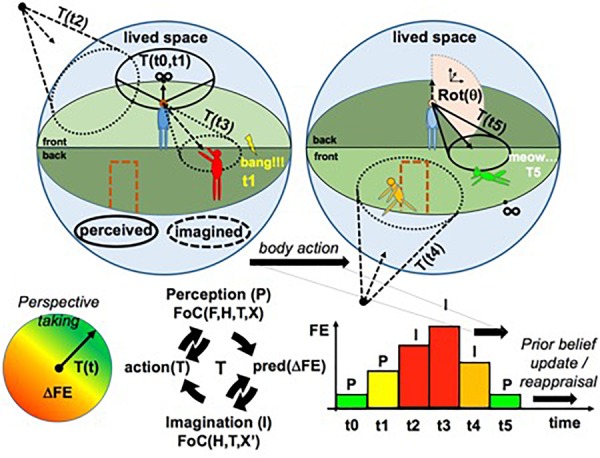FIGURE 4.

Overall sketch of the PCM. Lived space S (represented by blue spheres): subjective experience of space and its contents as perceived (continuous funnels on the figure) or imagined (dashed funnels), framed in a 3-dimensional projective representation in perspective of a world model R(X, t) associated with a distribution of Free Energy (FE), related to cognitive and affective personal preferences (colors on the manikins and door, and disk with color gradient). Perspective taking and the selection of corresponding projective transformations T are constrained by the gradient of FE across space δFE. The diagram with the arrows in a circle represents the possible transitions of state affecting the FoC: form perception to imagination and action. The FoC is partially driven by sensory evidence when it is focused on perception of the local environment and entirely driven by prior beliefs in memory and simulation capabilities when it is focused on imagination of non-local spaces (e.g., when we imagine ourselves at home while we are at work). FE minimization defines the optimal perspective at a given instant. FE is globally minimized through cycles of perception, imagination, and action across time. The bar graph represents FE as a function of time and of the different perspectives and processing modes [P—perception versus I—(non-local) imagination] adopted by the system (see text and Rudrauf et al., 2017; image from Rudrauf et al., 2017, used by permission from Elsevier).
